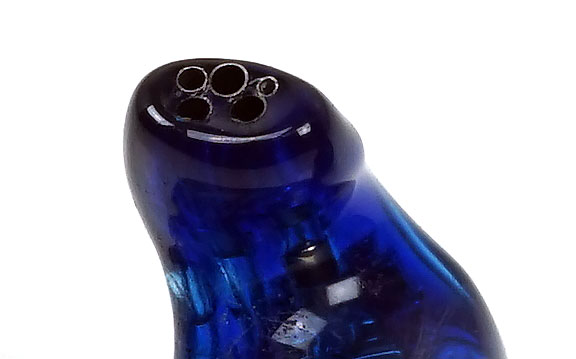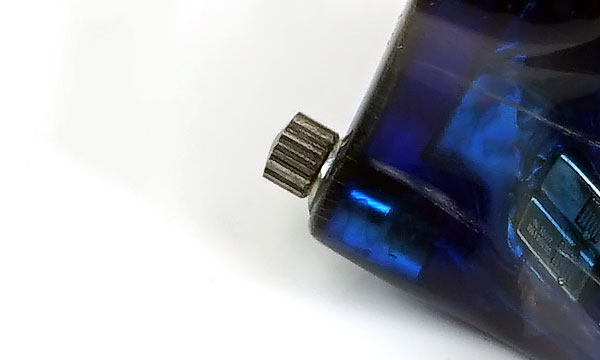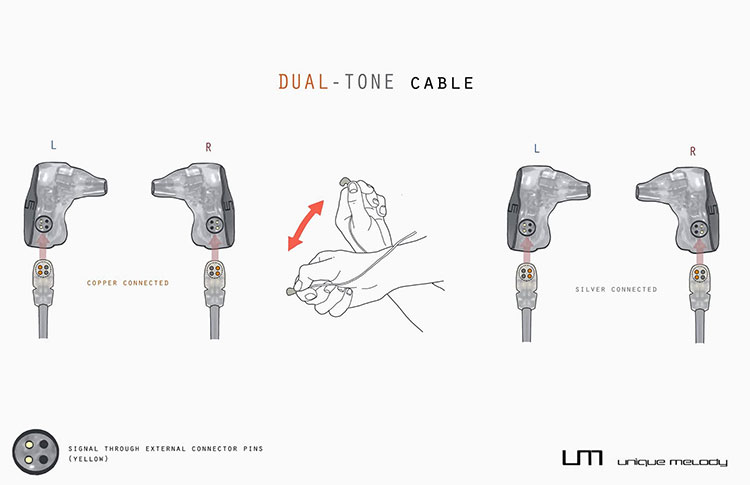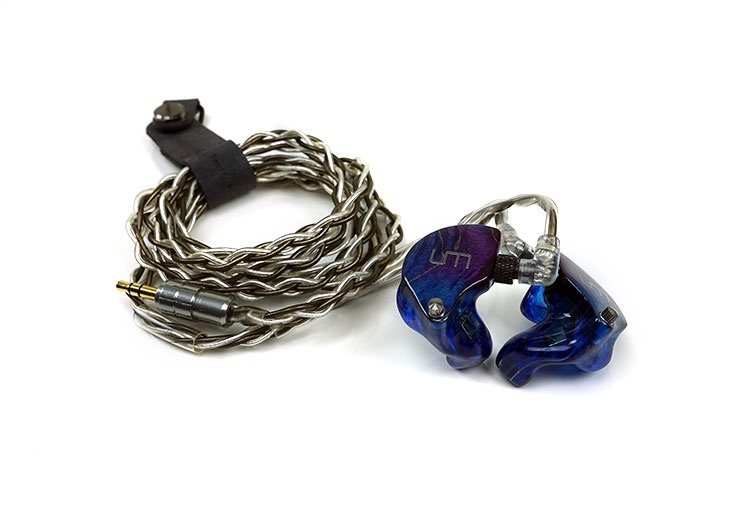Meet the Mason V3
Design
What a stunning design. UM really nailed this one and it will rank in my top 3 alongside the VE8 woodheart plates and the Harmony 8.2’s lava candy fusion. The Blue Maple faceplate combined with the silica blue shell perfectly compliment each other.
Of course, blue maple is a popular bonsai myth, it does not actually exist. Rather this is a dyed maple wood plate finish. I must say the grain perfectly compliments the Dreamweaver white fiber strands to the point where you could be forgiven for thinking it is a one-piece design and not two.
Though I initially did not pick up on it at first there is a subtle fusion of a light shade of purple and red in the top corner of the faceplate. It only really comes to the fore under certain lighting conditions. I am not sure how fully intentional that it is but is these little touches that make CIEM designs so wonderfully intriguing.
Shell
The Dreamweaver constructed acrylic shell is quite distinctive with its unique fibrous lines running throughout. The layer by layer design should make this shell fairly robust from accidental knocks.
It is a substantially larger shell than the 64 Audio A18 despite having two fewer drivers. If you look at the internals the drivers used by UM do seem bigger compared to the tightly-packed and diminutive driver set on 64 Audio’s flagship.
Note the wide girth of the connection socket to accommodate the 4 pin design of the dual-tone cable. Two pins are null and two are active so essentially half is live and the other half act to steady the ship when the cable is connected.
I have to say the threaded screw fit 0.78mm connector socket is fantastic. It is very easy to insert and screw tight. No more worrying wiggling to tease out those overly tight cable pins.
Nozzle
The Mason V3 has a fairly short nozzle in comparison to quite a lot of other customs such as the A18, VE8 and the SA-43 from Music Fidelity. It also uses a tube design with a multi-bore finish at the tip. It is not completely flush on the tip, there is a very small ridge protecting the openings.
The bore count is five which is just about the most bore counts I have seen on a CIEM to date. The 18 driver A18 uses a single wide opening horn design as does the VE8. the 12 driver Maestro V2 only uses 3 bores.
I strongly suggest you keep these bores clean after daily use with the cleaning pick because they do range in size with one that is very small indeed. I can envisage a scenario where that one will get blocked with wax and dirt without due care.
Tuning Module
Nestled in the top forward corner of the faceplate, right above the nozzle is the DB-Go tuning module. The module is made from aluminum so it feels sturdier than switch solutions other companies deploy.
It functions by allowing the user to screw clockwise or anti-clockwise so it is not an immediate 4dB but a gradual increase or decrease depending on your preference. Note clockwise is “forward” when the Mason V3 is in your ears and will increase the bass response whereas back or anti-clockwise will decrease it.
Cable
Design
Its two cables interweaved into a single jack and two special terminations for connecting to the Mason V3. One cable is 6N 8-core single crystal copper and the other is 6N 8-core silver. Both are terminated with a 0.78mm two-pin.
The really neat twist is that there are in fact 4 pins on the left and 4 pins for the right or 2 for each wire per side. How you select the wire of choice is by simply swapping over left to right and right to left. In doing so you are “rotating” the pin from outer to inner as shown below:
Left Or Right?
Technically that means there is no right and left, rather a configuration for copper and a configuration for silver. You will not find an L and R, rather you feel the top of the jack for two little bumps on one side and a single bump on the other. The dual bump on the left side denoted copper connected and if you switch the dual bumps to the right it means you are connected to the silver wiring.
Bumps
These bumps are tiny, hard to see, almost equivalent to doing it via pure touch. In your ear, this is useful, easy to figure it out, but visually much harder. My suggestion to UM is to dot these red and black so you capture both visual and touch sensory confirmation when changing the cable. It makes things a lot easier.
Plastics
The one other area I debated on was the use of plastic transparent tubing for the Y-Split and chin strap slider. This takes a little of the glamour away from the cable. I appreciate that weight may have been a consideration but I have seen more refined solutions that are just as light using plastics or very light varnished wood. As of now, the finish is more functional than finesse.
Finest Cable Yet
Apart from that I absolutely love the locking mechanism on the Dual Tone cable as well as the looks. It is one of the best stock cables I have seen in a while that is not 3rd party and certainly UM’s finest creation.
The pins slide in without any effort and everything locks in nice and tight with the threaded dial. If you have used a JH Harvey Roxanne then you know what I am talking about as it works on the same basis.
The cable itself is 1.2m in length and terminated with a hefty looking short but wide 3.5mm gold plated jack. There is no supplied quarter jack, at least not with this package. Both cables are 8-core so a little thicker than your usual plastics one. However, the PET jacket is soft and pliant making this an excellent cable for low microphonics and zero memory retention.
Comfort & Seal
The Mason V3 comfort level is very high indeed. Partial credit to the fine job they did at the Guangzhou Show with the molding process and also to their finishing process.
This is my third UM mold stretching back to 2011 and each one feels very similar. The nozzles are always a touch shorter and the Mason V3 is no different. This slightly shorter length will feel comfortable to first-time users but it is not something a pro would use on stage as it can come a bit loose when jumping around or poking it with a bit of gusto.
It is a bit of a trade-off with ultimate comfort having a slight priority over depth and being rock steady in your ear. Mind you the seal is very good for most occasions. It is as good as any I have tried in normal everyday situations with no gaps forming with either open or closed jaw expressions.
Just make sure the memory cable is formed before use. The weight of the dual-tone cable will gently pull on the depth of insertion with the Mason V3, particularly if the canal has a little surface moisture.
Sound Impressions
Tonality & Presentation (Copper)
The tonality is smooth and full-bodied with a slight emphasis on the mid-bass but not a huge amount, just enough to infuse the signature with plenty of rich and detailed texture.
The Mason V3 is very natural, almost organic sounding. It delivers a beautiful and slightly weighted vocal presence combined with a relaxed but detailed top-end.
Staging will deliver a touch more depth than height with excellent width and imaging. If anything the top end, especially with copper is a bit laid back with a drop post 5-7k. The forward vocal presence brings everything in a touch so it’s not as airy and spacious sounding as the A18 but it is more open and resolving than the darker VE8, particularly in the mids.
I know UM may pitch this as more reference sounding than the Mentor and it is that in terms of balance but it is not in the least bit sterile or analytical. For me, this is non-fatiguing but highly resolving and most importantly an engaging sound.
Tonality & Presentation (Silver)
Tonally, the Mason V3 is still quite balanced but the amount of body gets trimmed a little with the silver connection in favor of a little more odd-harmonic presence and a cleaner presentation.
Those who find the Copper presentation to be too rich or a little laid back might prefer the slightly cooler pitch of the silver connection. It takes a little fat off the low-end in return for more upper mids and lower treble presence. Instrumental timbre also becomes a little cleaner and more neutral sounding with a sharper more clinical attack.
I still rate it as a fairly natural-sounding but it does sound a lot more linear now especially if you keep the DB-GO dial turned down. I prefer the tonality with the module ‘full-on’ using the silver cable when listening to arena rock. Without the DB-Go, the Mason V3 is pitch-perfect for acoustical or string work where I really want that tighter cleaner note attack to ring loud and clear.
Staging wise the lift in treble presence adds a bit more perceptible sparkle and headroom to the Mason V3. I do love the additional snap and clarity the silver brings to the top-end. It is a welcome contrast to the softer richer tones of the copper. The depth is still very good though just not quite as full sounding and impactful as the copper.
Bass
With the DB-GO switched off you get a 4dB drop from around 80-20Hz which rolls off the sub-bass presence a little but it is subtler than you might think.
To be perfectly honest it will not play a huge role in all but the most sub-bass dominant tracks which is where you really want it to work. If you are looking for a touch more power and body for dark synth wave, huge soundtracks, and low hitting R’n’B then you might want to push the dial forward.
The dial brings the sub-bass from just south of neutral to slightly north of neutral and a touch higher than the existing mid-bass elevation by around 1dB. I tend to enjoy my low-end elevation sub 80hz rather than a pure mid-bass hump so this gets my vote.
Copper vs Silver
With the copper cable, the DB-GO 4dB enhancement is just the right blend of power and warmth to deliver some tasteful sub-bass presence without losing any definition and speed. This is the best cable and db combination to deliver the most low-end weight and depth on the Mason V3.
The silver connection sub-bass response will sound a little leaner without the DB-GO and I tend to prefer it boosted by that 4dB just to bring in a little additional warmth and body.
Mids
From 100Hz onwards the low-end of the Mason V3 drops ever so slightly, maybe about 3-4dB into the lower mids and remaining relatively neutral around 700-1Khz. From 1k to about 3-4k the Mason V3’s FR gets an uptick in energy with a more forward sounding vocal presence.
Copper
Lower mids instrumental passages do retain a rich yet natural sounding timbre with a good body though it doesn’t seem to hinder instrumental clarity which I find to be very good indeed. There is nothing lean or brittle about this response.
Vocals on the Mason V3 using the copper cable are truly excellent. They are full sounding, very detailed and natural as well as suffering from zero sibilance. You will not find a single partial overtone or harsh/metallic quality to the vocal presence on this monitor.
Silver
Switching to the silver part of the cable the Mason will deliver a cleaner and slightly brighter midrange presentation. Some of that richness in the timbre is taken out and in its place, you get a little more bite and focus on the attack or leading tone of the note.
String instruments, guitar or otherwise will sound a little clearer but also a little more neutral. Vocal presence is not quite as full-bodied but still sound very refined and sibilant free.
Treble
With the copper, the Mason v3 is slightly laid back with more of a lower treble presence peaking around 5-7k but only about 2-3dB more than vocals and its low-end elevation. It is just enough to inject a little sparkle into percussion and keep it from sounding subdued.
Post-7k it falls away a touch with a minor 1-2dB peak at 10-12k to prevent it from sounding shelved down. You could argue it lacks a little air compared to say the A18 but I find the A18 to be generally more open sounding compared to most IEMs, even open backs. The greater emphasis here with the Mason V3 is on a natural non-fatiguing sound with good body and excellent detail.
Silver
With the silver cable, you get a much better lower treble presence but it is neither harsh nor brittle. Rather, the boosted upper mids and lower treble have a bit more sparkle and clarity.
Percussive passages, in particular, will sound a bit more forward and deliver a bit more snap and energy than the copper tone. Anyone looking for a more open-sounding top end with a bit more air and palatable articulation will veer to the silver connection with the Mason V3.
Click on page 3 below for pairing & Comparisons







